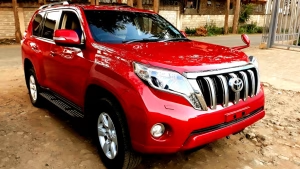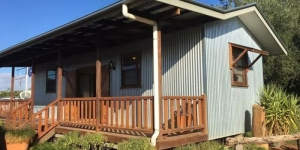Learn how to Connect a Washing Machine in Kenya with this step-by-step guide. Discover tips on plumbing, electrical setup, and water supply compatibility.
Summary
Connecting a washing machine in Kenya involves more than just plugging it in. From ensuring water supply compatibility to handling power outlets and drainage, this guide walks you through a simple, reliable process to set up your washing machine at home.
Introduction
A washing machine is a time-saving household essential in many Kenyan homes, especially with growing urbanization in cities like Nairobi, Mombasa, and Kisumu. However, improper installation can lead to issues like water leaks, electrical faults, and poor performance. In this guide, we’ll cover everything you need to know to connect a washing machine in Kenya safely and efficiently.
What You’ll Need to Connect a Washing Machine
Before you begin, ensure you have the following tools and materials:
- Adjustable wrench
- Water inlet hose (usually comes with the machine)
- Drain hose
- Hose clamps
- Power outlet (220-240V)
- Plumbing tape
- Water supply tap (preferably with a ball valve)
Step 1: Choose the Right Location
Start by selecting a suitable spot for your washing machine. In Kenyan households, common installation areas include the kitchen, bathroom, or laundry room. Keep these factors in mind:
- Flat Surface: The machine must sit on a stable, level floor to avoid vibrations during operation.
- Water Supply Nearby: Ensure there’s a water tap within easy reach.
- Drainage Access: The machine needs a drainpipe or sink nearby to discharge water.
- Power Outlet: Use a grounded power socket with the correct voltage (220-240V).
Step 2: Connect the Water Inlet Hose
Most washing machines come with a water inlet hose. Here’s how to connect it:
- Attach the Hose to the Machine: Screw one end of the water inlet hose to the back of the washing machine.
- Connect to the Tap: Secure the other end to the water supply tap.
- Check for Leaks: Turn on the tap and check for any leaks. Use plumbing tape to seal if necessary.
Water Supply Tips in Kenya
- Ensure steady water pressure: Many Kenyan homes, especially in rural areas, may experience low water pressure. Consider using a booster pump if necessary.
- Check water quality: If you have hard water, use a water softener to prevent damage to the washing machine.
Step 3: Connect the Drain Hose
The drain hose discharges used water from the washing machine. Follow these steps:
- Attach to the Machine: Insert the drain hose into the outlet at the back of the washing machine.
- Position the Hose: Place the hose into a drainpipe or sink. Ensure it’s secured at a height of 65-100cm to prevent backflow.
- Secure with a Clamp: Use a hose clamp to keep it in place.
Step 4: Plug in the Washing Machine
Ensure the power socket is properly grounded to avoid electrical hazards. Plug the washing machine into a 220-240V power outlet, which is the standard voltage in Kenya.
Safety Tip: Avoid using extension cords to prevent overheating.
Step 5: Test the Washing Machine
After all connections are in place, it’s time to test the machine:
- Turn on the Water Supply: Ensure there are no leaks.
- Run a Test Cycle: Select a short cycle to ensure the machine fills and drains water correctly.
- Check for Vibrations: If the machine vibrates excessively, adjust the leveling feet.
Common Installation Challenges in Kenya
| Challenge | Solution |
|---|---|
| Low water pressure | Use a booster pump or store water in a tank. |
| Hard water | Install a water softener to protect the machine. |
| Electrical fluctuations | Use a voltage stabilizer to protect the appliance. |
| No dedicated drain pipe | Use a bucket or sink for water discharge. |
Warranty and Service Options
Most washing machines sold in Kenya come with a 1- to 2-year warranty. Ensure you purchase from reputable retailers like:
- Hotpoint Appliances
- Jumia Kenya
- Housewife’s Paradise
Check the warranty terms to confirm if installation service is covered.
User Opinions and Testimonials
“I connected my washing machine in Nairobi with ease using this guide. The tip about using a voltage stabilizer was a lifesaver!” – Grace M., Nairobi
“In Kisumu, we have low water pressure. I installed a booster pump, and my washing machine works perfectly now.” – Joseph O., Kisumu
Final Verdict
Connecting a washing machine in Kenya is straightforward if you follow the right steps. Ensure you have a stable water supply, proper drainage, and a reliable power outlet to get the most out of your machine.
FAQs on How to Connect a Washing Machine in Kenya
Q1: Can I connect a washing machine without a dedicated drainpipe?
A: Yes, you can discharge water into a sink or bucket, but ensure the drain hose is secured to avoid spillage.
Q2: What is the standard voltage for washing machines in Kenya?
A: The standard voltage is 220-240V.
Q3: How do I improve low water pressure?
A: Consider installing a booster pump or using water from an overhead tank.
Q4: Can I use an extension cord to plug in the washing machine?
A: It’s not recommended. Use a properly grounded wall socket to avoid electrical hazards.
Q5: Do I need a plumber to connect my washing machine?
A: It depends on your experience. For complex plumbing setups, it’s best to hire a professional.
Related: How Much is CCTV Installation in Kenya
Final Thoughts on How to Connect a Washing Machine in Kenya
Proper installation of your washing machine ensures it operates efficiently and lasts longer. By following this guide on how to connect a washing machine in Kenya, you’ll save time, prevent damage, and enjoy hassle-free laundry days.





